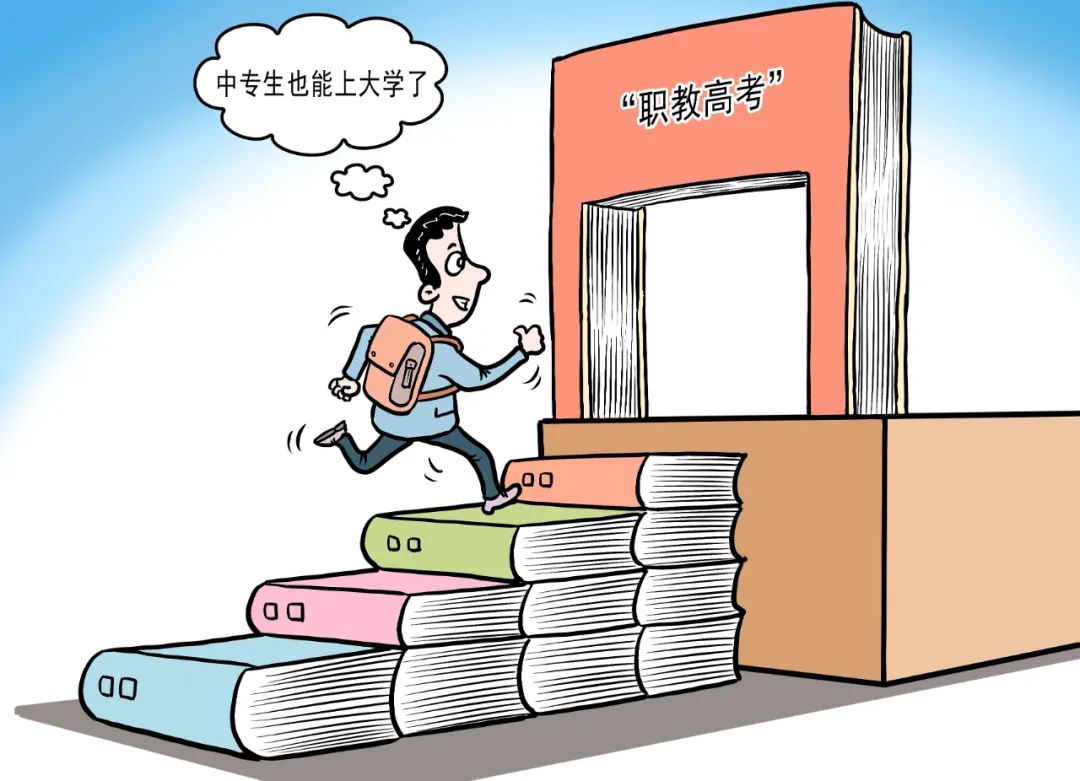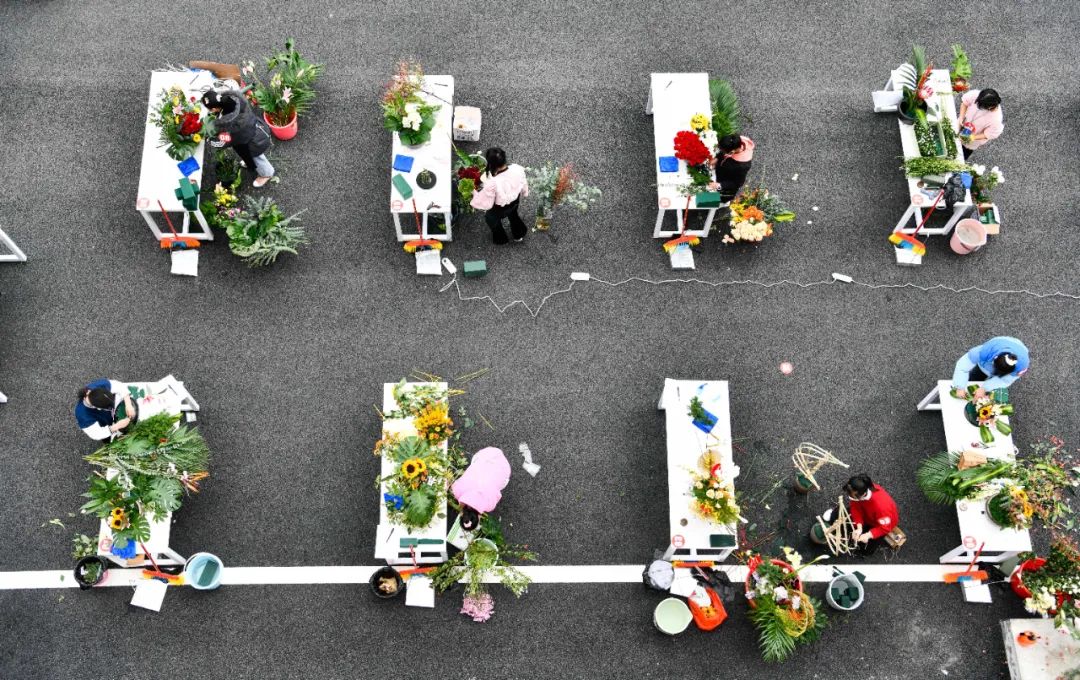With the vigorous implementation of "double reduction", it is still difficult to extinguish the anxiety of parents who want their children to go to a good university. The policy of general and vocational diversion in the senior high school entrance examination stage has caused many parents to fall into a "layered" panic. In February this year, at the press conference held by the Ministry of Education, the relevant person in charge introduced that one of the "five key points" to be broken through this year is to make the "vocational college entrance examination" the main channel for higher vocational enrollment, so as to effectively alleviate the pressure of diverting the senior high school entrance examination and education anxiety.

The college entrance examination for vocational education is an important achievement and symbolic action of the great reform and development of vocational education since the 18th National Congress of the Communist Party of China. As can be seen from the statement of the Ministry of Education, the vocational college entrance examination has high hopes. The central government hopes to promote the establishment of a "vocational college entrance examination" system with overall planning, comprehensive evaluation and multiple admissions at the provincial level, improve the situation of students passing the ordinary college entrance examination, and become another "track" for going to college.
What is the vocational college entrance examination? Who can refer to it?
The vocational college entrance examination system is an examination enrollment system with the same function as the general education college entrance examination system. The establishment of vocational college entrance examination system aims at unblocking the growth channels of technical and skilled talents, building an all-round application-oriented talent training system connecting secondary vocational education, junior college vocational education, undergraduate vocational education and professional degree graduate education, breaking the single-plank bridge pattern of ordinary college entrance examination and forming a two-lane college entrance examination with vocational education and general education.
The concept of vocational college entrance examination was first put forward in the National Vocational Education Reform Implementation Plan issued in 2019. Prior to this, it appeared in the name of "Higher Vocational Classification Examination". In 2014, the state required the implementation of higher vocational education classified examination enrollment, which was relatively separate from that of ordinary colleges and universities. Since then, 31 provinces in China have basically established their own vocational education classified examination enrollment system according to their own conditions.
For example, Shandong explored the implementation of the spring college entrance examination system, and upgraded it to the vocational college entrance examination in 2022. The implementation effect was good. The proportion of undergraduate admission through the vocational college entrance examination in the province changed from 6:1 to 4:1, and the proportion of secondary vocational students pursuing further studies exceeded 70%.

Vocational school students participate in the art flower arrangement competition. Photo by Yang Wenbin
Theoretically, all high school graduates can take the vocational college entrance examination, whether they are fresh graduates from ordinary high schools or secondary vocational schools or previous students. Of course, the focus of the vocational college entrance examination is to face the graduates of secondary vocational schools, so that they can enter the university through the vocational college entrance examination, further study, get a bachelor’s degree and receive a higher level and higher quality education.
How to take the exam? Where to?
According to the published vocational college entrance examination scheme in various places, we can see that the comprehensive examination mode of "cultural quality+vocational skills" is basically adopted in various places.
The cultural quality examination takes three courses, namely Chinese, mathematics and foreign languages, while the vocational skills examination adopts the "1+2" course model, that is, a professional basic course plus two professional core courses. The three courses should cover the most important professional basic theoretical knowledge and skills of this major. The examination is conducted in the way of "paper and pencil test+practical operation". The cost of practical operation examination is high, which is much higher than that of paper-and-pencil examination, whether it is labor cost, time cost, venue cost or material cost.
There are three main types of schools that enroll students in vocational college entrance examination: one is 32 vocational undergraduate colleges, the other is 1468 vocational colleges, and the other is application-oriented undergraduate colleges that are willing to offer vocational undergraduate majors and recruit middle and higher vocational graduates.
Among these three types of colleges and universities, vocational education undergraduate and application-oriented undergraduate schools are more attractive and will become the first choice for candidates and parents. During the 14 th Five-Year Plan period, the Ministry of Education will select and build about 10 high-level vocational undergraduate education demonstration schools. Higher vocational college, because of its low academic level, has been regarded as a guaranteed school and the last option by candidates in a sense.
Two types of universities: three different and three identical.
There are three main differences between vocational education universities and ordinary universities.
First, the names are different.It can be distinguished from the name of the school. The state explicitly requires the name of the vocational education university to be "a certain vocational and technical university", and the name is fixed when it is approved to be established. It also requires these schools to have "the same running direction, the same training mode and the same characteristic development", which has obvious identity and social characteristics.
Second, the major is different.In 2021, the Ministry of Education studied and formulated the management measures for the establishment of vocational education undergraduate professional catalogs, and at the same time announced 247 vocational education undergraduate professional catalogs, establishing a self-contained professional catalog system.
Third, the evaluation is different.Different from the evaluation and requirements of ordinary undergraduate schools. In 2021, the Ministry of Education will study and formulate the qualification evaluation index of vocational undergraduate schools, put forward the basic requirements for running schools, and prepare to evaluate the undergraduate teaching level of vocational and technical universities.
In addition to the "three differences", vocational education universities and ordinary universities also have "three similarities", that is, the same degree, the same treatment and the same effect.
Same degree,That is to say, the bachelor’s degrees of graduates from vocational and technical universities and ordinary universities are awarded according to disciplines, which is the same, and there is no difference between vocational education degrees and ordinary degrees.
Equal treatment,The state requires graduates of vocational and technical colleges to enjoy the same treatment as graduates of ordinary schools in employment, recruitment, title evaluation and promotion.
Have the same effect,That is, the degrees and academic qualifications issued by vocational and technical universities, like ordinary universities, can participate in postgraduate entrance examination and employment, and have the same legal effect.
The biggest problem:How do "local food stamps" circulate throughout the country?
At present, the biggest problem in the vocational college entrance examination is that its test scores are only "local food stamps", which are difficult to circulate nationwide, and have not become the "hard currency" of the whole country like the ordinary college entrance examination.
The college entrance examination for vocational education is basically a proposition in the province, an examination is organized, and then admission is made. Undergraduate schools are mainly local schools with jurisdiction in this province. The formulation of examination standards, the development of examination questions (database) and the evaluation of scores are still "not hard enough", and there is still a lot of room for improvement. The reliability and validity of the examination are still not high, and it is difficult to achieve cross-provincial circulation because of the lack of credibility and authority. It is difficult for candidates from one province to be recognized by other provinces and cannot be accepted by relevant universities in other provinces. This is directly related to the practical operation test of skills, and has become the key blocking point for the nationwide circulation of vocational college entrance examination. (The author is Nie Wei, Associate Research Fellow, Institute of Vocational and Continuing Education, China Academy of Educational Sciences)